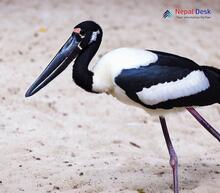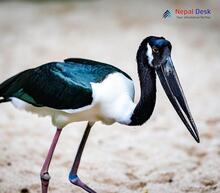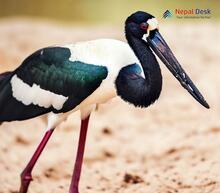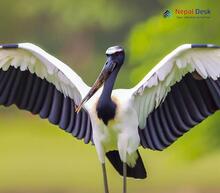Nestled among the breathtaking landscapes and diverse wildlife of Nepal, the fascinating birds of the Ephippiorhynchus genus have captured the attention of bird enthusiasts and nature lovers alike. These elegant animals, members of the stork family, showcase striking colors and impressive sizes, making them a sought-after sighting in the Nepalese wilderness. Here, we will delve into the captivating profile of these extraordinary birds and reveal what makes them an intriguing emblem of Nepal's rich fauna.
Meet the Ephippiorhynchus Genus
Inhabiting a select few regions worldwide, the Ephippiorhynchus genus comprises two unique species – the Black-necked Stork (Ephippiorhynchus asiaticus) and the Saddle-billed Stork (Ephippiorhynchus senegalensis). While their geographical distribution may vary, both species feature distinctive characteristics that render them easily distinguishable from other storks. Boasting vibrant patterns along their bill and possessing long legs suited for wading in shallow waters, they represent nature's incredible creativity as well as its adaptability.
Gliding through Nepalese Skies: The Black-necked Stork
Particularly notable in Nepal is the presence of the Black-necked Stork. Locally known as "Jugunna," this bird graces various protected areas such as Bardia National Park, Chitwan National Park, Koshi Tappu Wildlife Reserve, and surrounding regions. Measuring up to 5 feet tall with a wingspan exceeding 8 feet, it stands out among its avian counterparts thanks to its glossy black neck adorned with a whisper of metallic green.
A Creature of Delicate Balance
Despite their impressive stature, Black-necked Storks displays great finesse when it comes to foraging and nesting habits. Deftly wading to find crustaceans, fish, amphibians, and even small mammals, these birds also take utmost care in constructing nests atop tall trees to ensure maximum safety for their offspring. As dedicated parents, both male and female storks attend to the demands of their hatchlings until they can venture out independently.
Conservation: A Shared Responsibility
While the Black-necked Stork is not critically endangered, its population remains vulnerable due to habitat loss and human encroachment. Conservation efforts in Nepal aim to preserve these iconic creatures by raising awareness and collaborating with local communities to safeguard key habitats.
In Conclusion
The diverse wildlife of Nepal plays a crucial role in preserving its fragile ecosystems. By delving into the profile of the enigmatic Ephippiorhynchus genus and discovering its captivating characteristics, we grow to appreciate and understand these awe-inspiring birds better. In doing so, we can collectively contribute to protecting them and the remarkable heritage they represent for generations to come. So grab those binoculars and venture into Nepal's wild outdoors – you might just be lucky enough to catch a glimpse of these charming storks adorning the landscape.




